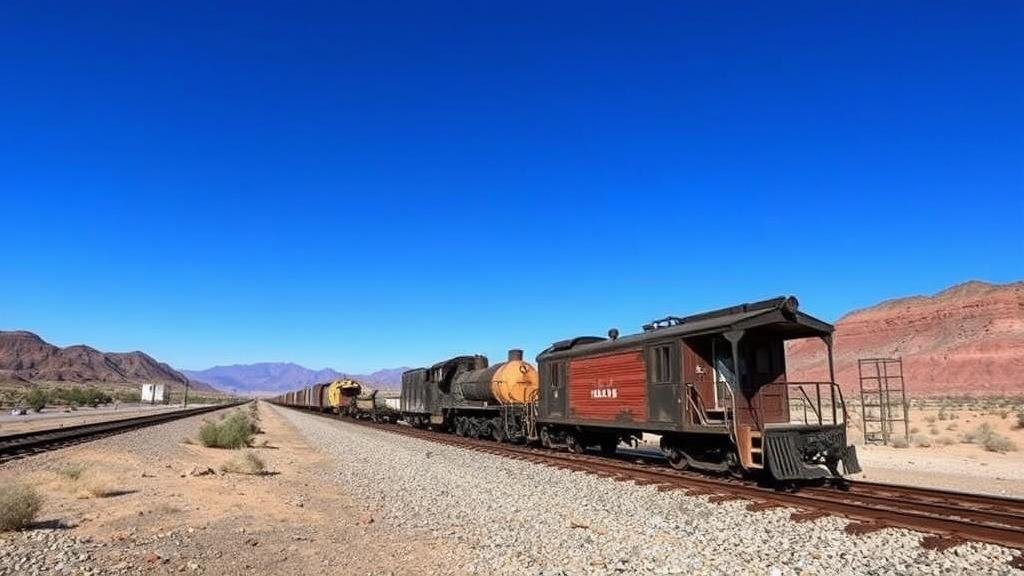Unearthing Hidden Wealth Along Abandoned Desert Railroads
Unearthing Hidden Wealth Along Abandoned Desert Railroads
Abandoned desert railroads are often viewed as relics of a bygone era, symbols of economic decline and forgotten landscapes. But, these forsaken paths possess untapped economic potential and hidden wealth waiting to be explored. This article examines the opportunities presented by these neglected corridors, showcasing how they can be revitalized for modern economic use while preserving their historical significance.
The Historical Context of Desert Railroads
Desert railroads served as critical lifelines to isolated regions, linking them with bustling metropolitan areas. For example, the Southern Pacific Railroad, completed in the late 19th century, opened up vast areas of the Mojave Desert, facilitating transportation for goods and people. Understanding the historical context of these railroads helps to appreciate their potential for economic revitalization.
As transportation technology evolved and road networks expanded, many of these rail lines became obsolete, leading to abandonment. The vast stretches of desert terrain left behind now present opportunities for transformation, whether through tourism, renewable energy, or ecological restoration.
Identifying Hidden Wealth: The Economic Potential
Beyond their historical significance, abandoned railroads in desert areas can unlock various forms of economic wealth. This section explores different opportunities associated with these forgotten routes.
- Transportation and Logistics Hubs: Rehabilitating rail corridors can serve as vital transportation pathways for freight logistics. For example, the investment in resurrecting portions of the Transcontinental Railroad could enhance supply chain efficiencies for industries relying on remote locations.
- Tourism Development: Transforming abandoned rail lines into hiking and biking trails can create ecological tourism hotspots. The Rails-to-Trails Conservancy has successfully advocated for many such projects across the United States, leading to increased local economic activity.
- Renewable Energy Projects: Utilizing existing rail corridors as sites for solar or wind farms minimizes land disruption while capitalizing on proximity to transportation routes for energy distribution.
Case Studies of Successful Revitalization
Examining successful case studies provides insight into how abandoned railroads can indeed be transformed into valuable economic assets. following examples showcase innovative revitalization projects:
- The High Line, New York City: Originally a freight rail line elevated above the streets of Manhattan, the High Line was transformed into a public park, driving tourism and significantly increasing property values in surrounding neighborhoods.
- The Ghost Town Trail, Pennsylvania: This 32-mile rail trail has revitalized local economies by attracting outdoor enthusiasts while preserving the area’s rich history and natural beauty, showing the potential for similar projects in desert settings.
Integrating Sustainability into Revitalization Efforts
Reimagining these abandoned railroads must also focus on sustainable practices. Conservation efforts are important not only for the ecological health of desert areas but also for fostering socially responsible economic development. Sustainability can be integrated through:
- Environmental Restoration: Projects that restore native vegetation along the rail corridors can improve biodiversity and promote ecological awareness.
- Community Engagement: Involving local communities in revitalization projects can ensure that economic benefits extend to those who have a stake in the land and its history.
Challenges and Considerations
While the potential is vast, several challenges remain when revitalizing abandoned desert railroads. Issues such as land ownership, funding, and environmental regulations must be navigated effectively. Also, it is essential to balance the new developments with cultural preservation efforts. The following key areas should be considered:
- Legal Frameworks: Understanding the legal status of abandoned rail corridors and navigating through the acquisition processes can be complex.
- Funding Sources: Identifying appropriate funding sources is critical. Public-private partnerships can serve as a viable strategy for mobilizing financial resources.
Actionable Takeaways
As we consider the future of abandoned desert railroads, it becomes clear that they hold significant promise as sources of hidden wealth. Stakeholders can take actionable steps to explore this potential, including:
- Conducting feasibility studies to assess specific opportunities along local abandoned railroads.
- Engaging with community leaders to incorporate local history and cultural significance in revitalization efforts.
- Exploring partnerships with environmental organizations to ensure sustainable practices are embedded into development plans.
To wrap up, the unearthing of hidden wealth along abandoned desert railroads offers immense possibilities for economic growth and community development. By reviving these neglected pathways, we can forge innovative paths for the future while honoring the past.


